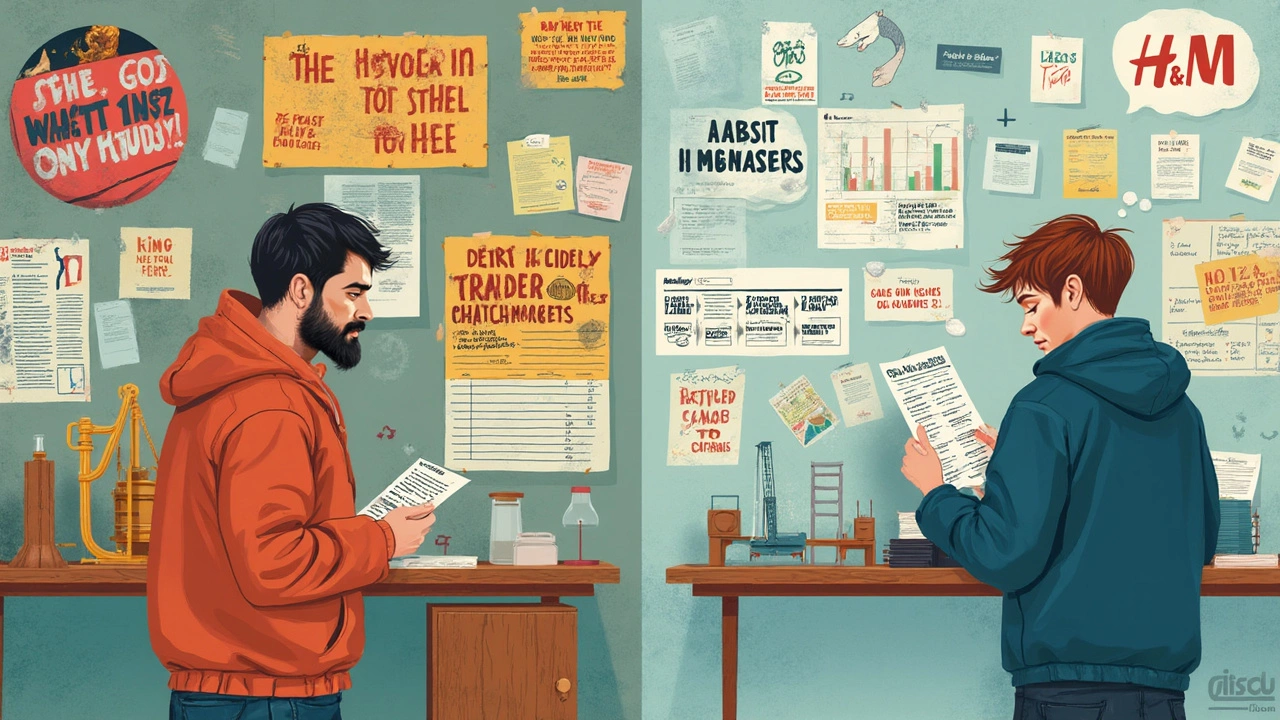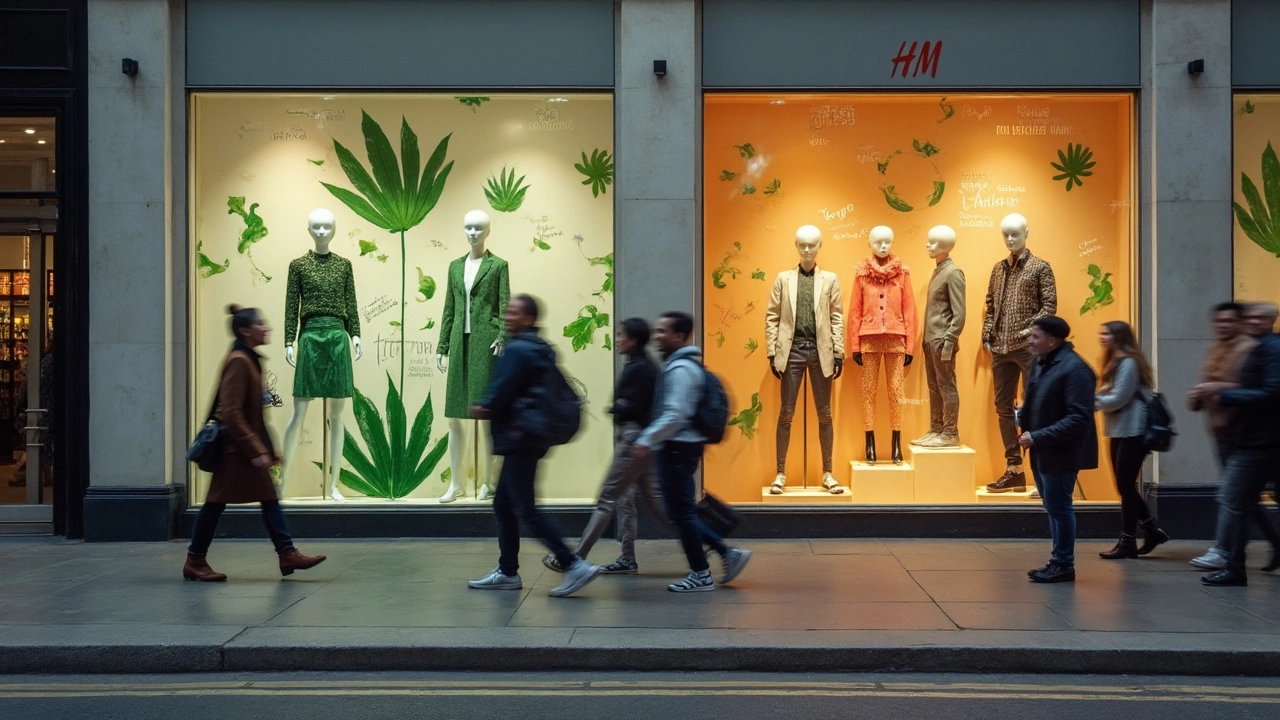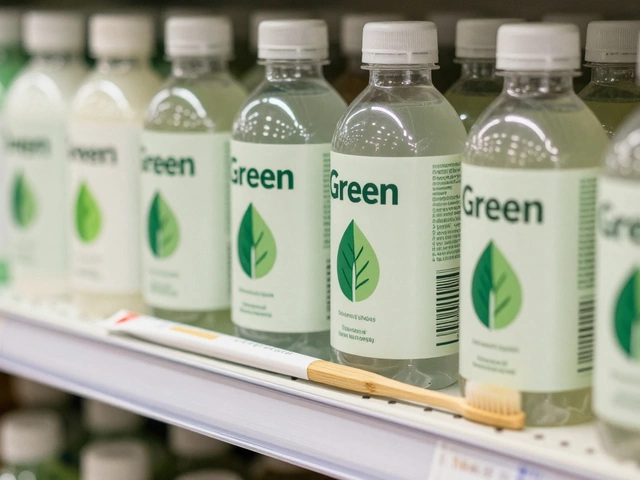Big names like Zara and H&M are everywhere—those glossy windows, bold displays, and racks of new must-haves always look so tempting. But if you’ve ever done a little window shopping with your conscience in the backseat, a question probably popped up: is one of these giants actually doing the right thing?
If you've been on TikTok or read a headline about "fast fashion," you know the drill: endless choices, cheap prices, scary waste. You might have heard both brands claim they're saving the world, but which one’s actually walking the talk?
The State of Fast Fashion: What Makes a Brand ‘Ethical’?
Before we get lost in marketing promises, let’s pin down what being "ethical" really means here. It’s not just about whether brands recycle hangers or send cheery Earth Day tweets. We’re talking about real impacts: the people making the clothes, the chemicals in your shirt, the mountain of waste left behind, and whether all that “sustainable” labeling actually checks out.
A 2023 survey on consumer perception showed 43% of shoppers under 30 say they “often” consider ethics and sustainability before buying clothes. That’s up from only 12% a decade ago. So brands have started shouting about “organic cotton” and “eco-friendly collections.”
Ethical fashion covers several fronts:
- How workers in the supply chain are treated—think fair pay, working conditions, hours, and safety.
- Environmental impact: water waste, pollution, carbon emissions, the type of fabrics used.
- Transparency: how much the brand reveals about its supply chain and production process.
- Animal welfare: policies about animal-derived materials.
- Genuine improvement—not just fancy words or greenwashing.
Let’s zoom into H&M and Zara to see who’s putting in the real work—and who’s just spinning stories.

Zara vs. H&M: Real Progress or Just Good PR?
H&M and Zara have both pumped serious money into looking ethical. H&M has its “Conscious” collection, and Zara has its “Join Life” line. Eco-labels on clothing tags are supposed to reassure you, but those two words—“conscious” and “life”—get tossed around so much it’s easy to feel lost.
So, what’s under the hood?
Let’s check the numbers. H&M is part of H&M Group, and Zara is a flagship under Inditex Group. The latest public data from their 2024 reports tells a lot:
| Metric | Zara (Inditex) | H&M (Group) |
|---|---|---|
| Annual Revenue 2024 | €35.9 billion | SEK 235 billion (~€20.2 billion) |
| Clothing produced in 2023 | ~1.5 billion units | ~3 billion units |
| Stores worldwide | 5600+ | 4700+ |
| CO2 Emissions in 2023 | –13% from 2019 levels | –22% from 2019 levels |
| Recycled/organic materials share | ~50% | ~25% |
| Supply chain factories disclosed | 100% | 100% |
On paper, both brands look like they’re doing something right. But step away from the spreadsheets. Fast fashion’s entire business model is rapid turnover and never-ending trends, which are pretty much the enemies of slow, sustainable change.
Both chains have faced headlines for poor working conditions. H&M workers in India, Bangladesh, and Ethiopia reported wage theft and harassment as recently as 2022. Zara’s parent Inditex was rocked by reports in 2019 when workers in Turkish factories sewed help notes into clothing, begging buyers to know their wages weren’t paid on time.
The problem? These scandals keep coming up. No matter how big the promise, it only counts if workers see change on the ground—and that’s still slow. Reports in spring 2024 found wage improvements were “spotty” and rarely reached a living wage, especially in Asian supply chains. Zara and H&M both publish supplier lists, but critics argue that real transparency means tracking subcontractors and publishing audit outcomes—something neither does consistently.
Now, let’s talk about greenwashing: the art of sounding green without really changing. Both brands have been called out by watchdogs like Changing Markets Foundation for using "sustainable" labels loosely. A 2024 review by Changing Markets found that over 55% of eco-labeled collections from ZARA and H&M contained mainly synthetic, fossil-fuel-based materials like polyester. “Conscious” and “Join Life” lines often have just a slight bit more organic or recycled material, and usually cost more.
Still, H&M has made some public moves. They’ve rolled out in-store recycling drop-offs (though only a tiny percentage of this gets recycled into new clothes) and claimed to increase organic cotton use. Inditex claims Zara will become “net zero” by 2040 (meaning their carbon emissions will be balanced by cuts or offsets), which is sooner than H&M’s 2045 goal.
All these numbers, all these promises—easy to get glassy-eyed. Here’s a tip: Check independent rating agencies if you want a reality check. Good On You, a trusted platform, rates Zara as “Not Good Enough” and H&M as “It’s A Start,” which isn’t exactly a gold star. Another group, Fashion Revolution, gave both brands a “61-70% transparency score”—higher than most fast fashion rivals, but not exceptional.
Bottom line? Both are still making billions off rapid, disposable trends. Their progress is real, but tangled up in business models that encourage more, not less, buying. Next, let’s look at what you can do with all this insider info.

How Can Shoppers Make (Slightly) Better Choices?
If you’re eyeing the racks at Zara or H&M and wondering if your choice makes a difference, here’s the honest bit: Ethical consumerism in fast fashion is messy. No brand is going to be a total saint, but you can still keep a sharper eye and vote with your wallet.
First off, don’t fall headfirst for a green label or a buzzy ad campaign. Both Zara and H&M love to splash their sustainable lines across their websites, but as we’ve seen, those lines are often just a drop in their huge, fast-moving production bucket. Most of their clothes are still made from polyester, viscose, and cotton grown with lots of pesticides—and those “recycled” synthetics? They shed microplastics every time you wash them.
Here’s how to read between the lines:
- Check labels for fiber content. Prioritize 100% natural or recycled fibers, but beware vague claims like “more sustainable.”
- Hunt for independent third-party certifications—think GOTS (Global Organic Textile Standard) or Fairtrade. Not all “organic cotton” is created equal.
- Use the Good On You app or website before purchases. Their ratings dig into brand supply chains and public actions.
- Reduce your fast-fashion buying—buy less, and shop secondhand or vintage if you can. The greenest garment is one already in your closet (or thrift store).
- Take advantage of repair and recycling services, but remember, true recycling rates are still ultra-low (often less than 1% for textile-to-textile, according to the Ellen MacArthur Foundation’s 2023 report).
- If you must indulge at Zara or H&M, choose better lines (like Join Life or Conscious) and pieces you’ll really wear for years, not just once for an Instagram pic.
Want to nudge the industry faster? Brands listen if you make noise—think reviews, emails, or just posting about your values on social. Shoppers demanding better transparency and living wages are part of why we’re even having these ethical conversations in 2025.
If this was a race, both Zara and H&M are jogging in the middle, waving their sustainability medals, while the real winners will be those who slow down the whole churn-and-burn business. Ethical shoppers aren’t perfect, and brands aren’t villains or saints. But every little change adds up—especially when you’ve got the facts on your side.










